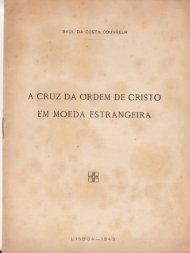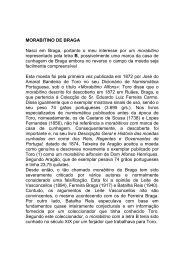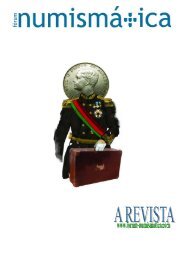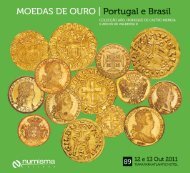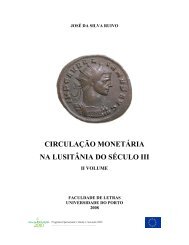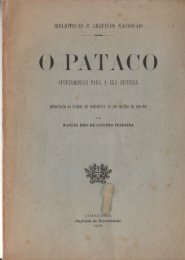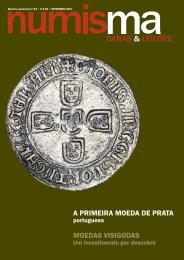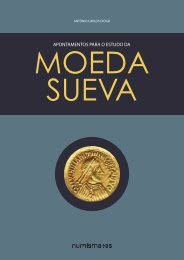Silver Pfennigs and Small Silver Coins of Europe in the Middle Ages
Silver Pfennigs and Small Silver Coins of Europe in the Middle Ages
Silver Pfennigs and Small Silver Coins of Europe in the Middle Ages
Create successful ePaper yourself
Turn your PDF publications into a flip-book with our unique Google optimized e-Paper software.
Rudolph IV <strong>the</strong> Founder, Duke 1358-1365<br />
Born <strong>in</strong> Vienna, Rudolf was <strong>the</strong> eldest son <strong>of</strong> Albert II <strong>and</strong> Johanna von Pfirt. One <strong>of</strong> <strong>the</strong> third<br />
generation <strong>of</strong> Habsburg dukes <strong>in</strong> Austria, he was <strong>the</strong> first to be born <strong>in</strong> Austria. Therefore, he<br />
considered Austria his home, a sentiment that no doubt communicated itself to his subjects<br />
<strong>and</strong> contributed to his popularity. He was one <strong>of</strong> <strong>the</strong> most energetic <strong>and</strong> active rulers <strong>of</strong><br />
Austria <strong>in</strong> <strong>the</strong> late <strong>Middle</strong> <strong>Ages</strong>, <strong>and</strong> it was said <strong>of</strong> him that as a young man he already had<br />
<strong>the</strong> air <strong>of</strong> a k<strong>in</strong>g.<br />
He was married to Kathar<strong>in</strong>e <strong>of</strong> Bohemia <strong>the</strong> daughter <strong>of</strong> Emperor Charles IV. Eager to compete<br />
with his fa<strong>the</strong>r-<strong>in</strong>-law, who had made Prague a radiant center <strong>of</strong> culture, Rudolf desired<br />
to raise <strong>the</strong> importance <strong>of</strong> Vienna to a comparable or greater height.<br />
For more than a century, <strong>the</strong> Habsburg dukes had chafed at <strong>the</strong> Popes' failure to make<br />
Vienna <strong>the</strong> seat <strong>of</strong> its own diocese, a status that <strong>the</strong>y considered appropriate for <strong>the</strong> seat <strong>of</strong><br />
a duchy. The Bishops <strong>of</strong> Passau, <strong>the</strong> diocese that <strong>in</strong>cluded Vienna, had excellent connections<br />
to <strong>the</strong> Pope, apparently doom<strong>in</strong>g Vienna's prospects <strong>in</strong> this regard. Rudolf, however,<br />
resorted to someth<strong>in</strong>g which could be considered imposture: He <strong>in</strong>itiated <strong>the</strong> creation <strong>in</strong> <strong>the</strong><br />
Ca<strong>the</strong>dral <strong>of</strong> Sa<strong>in</strong>t Stephan (Stephansdom) <strong>of</strong> a Metropolitan Chapter (which, accord<strong>in</strong>g to<br />
<strong>the</strong> name, should be assigned to a bishop), whose members wore red garments as card<strong>in</strong>als<br />
do. The provost <strong>of</strong> <strong>the</strong> chapter received <strong>the</strong> title <strong>of</strong> Arch-Chancellor <strong>of</strong> Austria.<br />
Rodolf extended Stephansdom, with <strong>the</strong> construction <strong>of</strong> its gothic nave be<strong>in</strong>g started under<br />
Rudolf's rule. Rudolf had himself be depicted on <strong>the</strong> ca<strong>the</strong>dral's entrance. The construction efforts can be seen as an attempt to<br />
compete with St. Vitus Ca<strong>the</strong>dral <strong>in</strong> Prague.<br />
Similarly, by found<strong>in</strong>g <strong>the</strong> University <strong>of</strong> Vienna <strong>in</strong> 1365, Rudolf sought to match Charles IV's found<strong>in</strong>g <strong>of</strong> <strong>the</strong> Charles University <strong>of</strong><br />
Prague <strong>in</strong> 1348. Still known as Alma Mater Rudolph<strong>in</strong>a today, <strong>the</strong> University <strong>of</strong> Vienna is <strong>the</strong> oldest cont<strong>in</strong>uously operat<strong>in</strong>g university<br />
<strong>in</strong> <strong>the</strong> German-speak<strong>in</strong>g world. However, a faculty <strong>of</strong> <strong>the</strong>ology, which was considered crucial for a university at that time, was not<br />
established until 1385, twenty years after Rudolf's death.<br />
To improve <strong>the</strong> economy <strong>of</strong> Vienna Rudolf <strong>in</strong>troduced many o<strong>the</strong>r measures, <strong>in</strong>clud<strong>in</strong>g <strong>the</strong> supervision by <strong>the</strong> mayor <strong>of</strong> sales <strong>of</strong> real<br />
property, <strong>in</strong>stituted to prevent sales to <strong>the</strong> dead h<strong>and</strong>, i.e., to prevent economically unproductive ownership by <strong>the</strong> Church. Rudolf<br />
also managed to establish a relatively stable currency, <strong>the</strong> so-called Wiener Pfennig (Vienna Penny).<br />
Rudolf is best known for ano<strong>the</strong>r bluff, <strong>the</strong> forgery <strong>of</strong> <strong>the</strong> Privilegium Maius, which de facto put him on par with <strong>the</strong> Electors <strong>of</strong> <strong>the</strong><br />
Holy Roman Empire, compensat<strong>in</strong>g for Austria's failure to receive an electoral vote <strong>in</strong> <strong>the</strong> Golden Bull. The title <strong>of</strong> Archduke,<br />
<strong>in</strong>vented by Rudolf, became an honorific title <strong>of</strong> all males <strong>of</strong> <strong>the</strong> House <strong>of</strong> Habsburg <strong>in</strong> <strong>the</strong> 16th century.<br />
In 1363, Rudolf entered <strong>in</strong>to a contract <strong>of</strong> <strong>in</strong>heritance with Countess Margarete Maultasch <strong>of</strong> <strong>the</strong> Tyrol, which brought <strong>the</strong> Tyrol<br />
under Austrian rule only after her death <strong>in</strong> 1369 s<strong>in</strong>ce her bro<strong>the</strong>r-<strong>in</strong>-law Stephen II, Duke <strong>of</strong> Bavaria had <strong>in</strong>vaded <strong>the</strong> country. The<br />
next year, he concluded ano<strong>the</strong>r Contract <strong>of</strong> Inheritance with his fa<strong>the</strong>r-<strong>in</strong>-law Emperor Charles, provid<strong>in</strong>g for mutual <strong>in</strong>heritance<br />
between <strong>the</strong> Habsburgs <strong>and</strong> Luxemburg.<br />
In spite <strong>of</strong> <strong>the</strong> high-fly<strong>in</strong>g (<strong>and</strong> maybe sometimes megalomaniac) character <strong>of</strong> his plans, he managed to modernize his territories<br />
<strong>and</strong> his city, <strong>the</strong> prom<strong>in</strong>ence <strong>of</strong> which considerably <strong>in</strong>creased. His untimely death halted fur<strong>the</strong>r progress, however. His bro<strong>the</strong>rs<br />
Albert III <strong>and</strong> Leopold III, who were to rule jo<strong>in</strong>tly under <strong>the</strong> Rudolf<strong>in</strong>ische Hausordnung (Rudolf<strong>in</strong>ian House Rules), began to quarrel<br />
ceaselessly <strong>and</strong> ultimately agreed to divide <strong>the</strong> Habsburg territories between <strong>the</strong>m <strong>in</strong> 1379.<br />
Rudolf is also remembered for found<strong>in</strong>g Novo Mesto <strong>in</strong> Slovenia whose German name, Rudolfswert, was given <strong>in</strong> his honor.<br />
Rudolf died <strong>in</strong> Milan <strong>in</strong> 1365. He <strong>and</strong> his wife are buried <strong>in</strong> <strong>the</strong> Ducal Crypt <strong>in</strong> <strong>the</strong> Stephansdom <strong>in</strong> Vienna.<br />
Austria<br />
Rudolph IV 1358-1365<br />
1358 Pfennig, Vienna m<strong>in</strong>t<br />
Obv.: crowned horseman right, hold<strong>in</strong>g shield <strong>of</strong> Austria.<br />
Ref.: Szego#153, VF



